I have been so frustrated with the drought that this year I decided to use succulents in some places where I might have put annuals. The wind, coupled with the lack of moisture, has made it hard the last few years for bedding plants to make a showing in my yard, which has an abundance of drying wind, so the switch to succulents made sense. The very thing that makes these plants succulents, their fleshy leaves, ability to retain water, sun-loving, makes them perfect candidates to stand up to the arid, dry, windy, hot conditions. I used primarily ice plant (delosperma), sansevieria, artemisia, dew plant, sedums, purslane-portulaca grandiflora and others this year, although there are many others you might try.
Ice plant comes in several colors and a variety of sizes, but it is all pretty. In warmer climates it will come back after the winter. In our climate, sometimes it does, sometimes not. It is usually recommended that you cut back on water as cold weather approaches, but I have not seen that it makes much difference with mine. But maybe that is because it is usually drier than most places here and the cutting back of water just sort of takes care of itself. If you are concerned about losing yours over the winter, take a cutting to root so you will have a start in the spring.
I forgot to take a close-up of the dew plant, but it is the one in the center. As you can see, it has filled its pot and blooms red. It is also available in yellow. It is not cold-hardy in my zone, zone 6. The yellow and magenta ice plant are in the other two.
Sedums grow a little slower than ice plant, but make a stunning hanging basket. The senecio on the right, string of pearls, is also impressive. It needs a bit more water.
This pot is a mixture of sedum and cotyledon.
The autumn joy, just as the name indicates, flowers later in the summer, closer to autumn. It comes is lavender and pink and perhaps other colors I have not seen. This one is growing its buds now for later flowering.
I’ll admit , I have no idea what this is! It was not marked when I bought it and have not been able to find on the on Internet yet. But it is interesting with its zig-zag growth. It takes a bit more water and a little filtered sun.
I bought a start of this plant at Sul Ross State University in Alpine in 2003 and it makes an interesting plant. It is a curcurbitaceae zerosicyos and has curling tendrils that latch on to anything close.
This purslane portulaca grandiflora is one I saved from last year, and it has done beautifully this year. I love the neon magenta blooms.
This ice plant is out in the big cactus bed and has come back year after year.
I used artemisia powis castle in one of the three big pots to add variety of color and texture. It should come back if watered some during the winter. The sansevieria tricolor I used for height and variety of texture in the pot with the yellow ice plant. The sansevieria is not cold hardy, so be prepared.
Hoya has color when exposed to the sun. Kolanchoe grandifloria makes a nice statement as well. These two are not cold-hardy. But then, neither are most traditional bedding plants.
The list is endless if you would like to try succulents in place of the annual bedding plants and even some perennials, which I find succumb to the drying wind and the need for water every single day, which can be a problem if your summer is full of trips and being away from the yard for days at a time. It is a bit late this year to try them, although you could get specimens started now and winter them inside and be ready for instant color and greenery in the spring after the first frost.
Start looking and be amazed at what you will find.
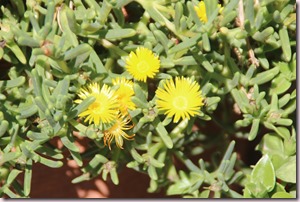
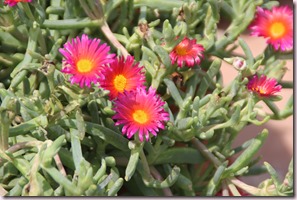
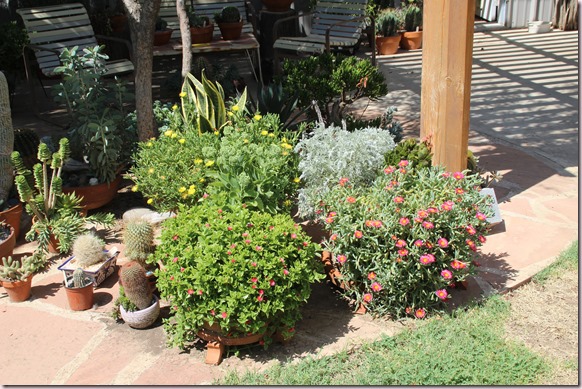
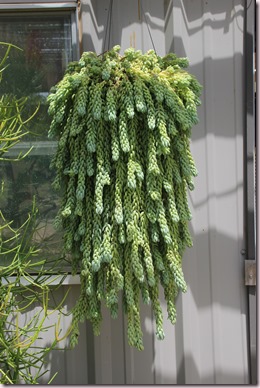

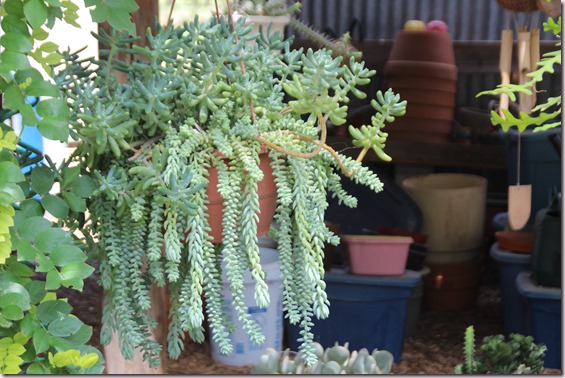
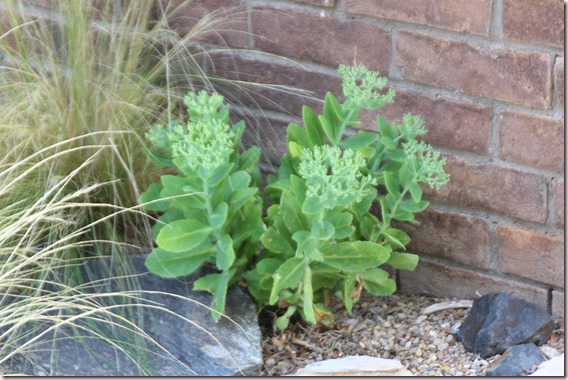
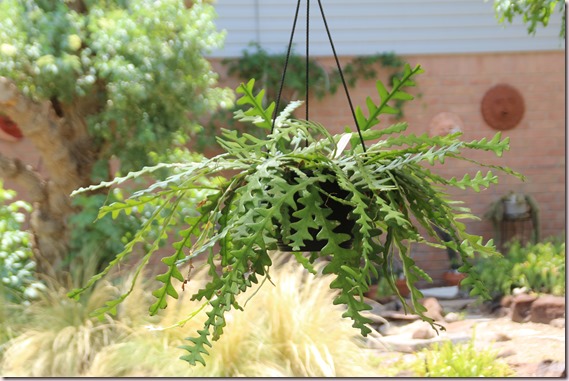
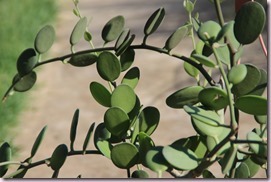
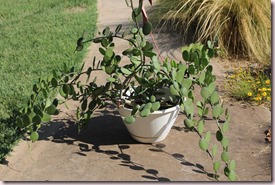
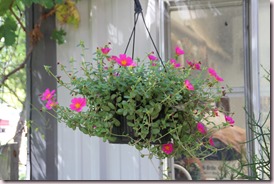
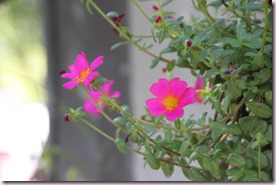

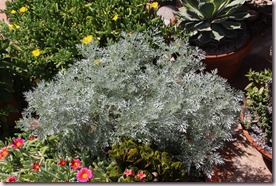
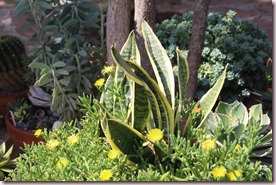

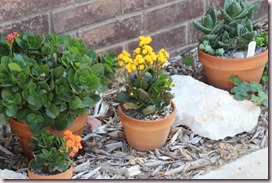
Your zigzag or rick rack plant is an orchid cactus! They are beautiful and gorgeous when in bloom. This is my Red Orchid Cactus. It has bloomed three times. I have diligently cared for it since it’s last bloom in 2012 but no luck. Loved looking at your cactus! Thanks for sharing!
http://sweetbloominscraps.blogspot.com/2012/06/red-orchid-cactus-bloom-spectacular.html
Thanks for the info about the orchid/zigzag cactus. I will now be waiting to see if mine blooms.